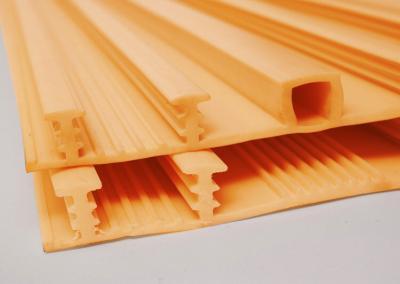Waterstop Systems
CORKJOINT® is a specialist in the development, manufacture and supply of Waterstop Systems
We provide waterstop solutions for any type of contruction project. Waterstop Systems are crucial components used in the construction of structures to prevent water ingress and ensure the durability and longevity of building projects. The Waterstop System is designed to withstand hydrostatic pressure and ensure that the water does not penetrate through the joints in the concrete. They are typically installed in the joints of concrete structures to create a barrier against water penetration.
Click on the images below to view the product details. If you can’t find what you’re looking for on our website, ask, and we will source it for you.
There are various types of waterstops used in construction, each designed for specific applications and conditions.
- PVC Waterstop: PVC waterstops are the most commonly used type of waterstops in construction as they are made from polyvinyl chloride (PVC), which is a durable and flexible material that is resistant to certain chemicals and environmental factors. PVC waterstops are available in different profiles, including Center Bulb, Dumbbell and Rearguard to accommodate different joint configurations. They are easy to install, cost-effective, and provide excellent resistance to hydrostatic pressure.
- Rubber TPER Waterstop: Rubber TPER waterstops are another popular type of waterstops used in construction as they are made from synthetic rubber, such as neoprene, EPDM, or nitrile, which is flexible and durable. Rubber TPER waterstops are available in different profiles, including Dumbbell, Center Bulb and Rearguard to accommodate different joint configurations as they have a high resistance to chemicals and environmental factors and provide excellent resistance to hydrostatic pressure.
- Hydrophilic Butyl Rubber: These waterstops are a type of waterstop that uses their natural swelling properties to seal joints and prevent water ingress. They are typically installed in concrete joints and swell when exposed to water, creating a watertight barrier. Hydrophilic Butyl Rubber waterstops are easy to install, cost-effective, and provide excellent resistance to hydrostatic pressure.
- Metal Waterstop: These waterstops are a type of waterstop that uses metal, such as copper or stainless steel, to create a barrier against water ingress. They are typically used in areas where high levels of chemical resistance are required, such as in chemical plants or wastewater treatment plants. They are durable, corrosion-resistant, and provide excellent resistance to hydrostatic pressure.
- Hydrophilic Waterstop: Hydrophilic waterstops are a type of waterstop that uses a hydrophilic material in rubber or polyurethane, to create a barrier against water ingress. They swell when exposed to water, creating a watertight seal. Hydrophilic waterstops are typically used in areas where high levels of water pressure are expected, such as in underground structures or basements. They are easy to install, cost-effective, and provide excellent resistance to hydrostatic pressure.
- Injection Hose System Waterstop: These are a type of waterproofing solution used in construction to prevent the ingress of water through construction joints in concrete structures. They consist of a flexible hose made of synthetic rubber, PVC or polyurethane, which is installed in the concrete joint, during the construction process, The waterstop material is injected into the hose after the concrete has been poured, allowing for retrofitting in existing structures.
- Form Tie Waterstop: Also known as waterstop ties, are a type of waterproofing solution used in construction to prevent the ingress of water through formwork ties in concrete structures. Form ties are used to hold formwork together while concrete is poured, and they can create small voids or gaps in the concrete that can allow water to seep through. Form tie waterstops are typically made of PVC, rubber, or polyurethane, and they are designed to fit over the form tie and create a watertight seal between the tie and the concrete. This helps to prevent water from seeping through the gaps and entering the structure.
Click on the images below to view our standard product range. If you can’t find what you’re looking for on our website, ask, and we will source it for you.
Read our Waterstop Installation Guide for quick instructions to all our Waterstop Products.


